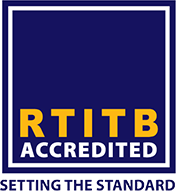- Forklift & Plant
- Forklift Training
- Counterbalance Training
- Reach Training
- Pivot Steer Training
- Order Picker Training
- Multi-Directional Training
- Side Loader Training
- VNA (Man Up/Man Down) Training
- Vehicle Mounted Lift Truck (MOFFETT) Training
- Pedestrian Pallet Truck Training
- Container Handler Training
- In House Forklift and Manual Handling Instructor Courses
- Plant Training
- Overhead Crane Training
- Telescopic Handler Training
- Scissor Lift Training
- MEWP (Cherry Picker) Training
- 180° Excavator Training
- 360° Excavator Training
- Forward Tipping Dumper Training
- Lorry Mounted Crane (HIAB) Training
- Skid Steer Training
- Loading Shovel Training
- In House Plant Or Crane Instructor Courses
- Related Training
- Truck Maintenance Training
- Familiarisation Training
- Polish Training Courses
- Slovak Training Courses
- Czech Training Courses
- FIRST AID
- OTHER
- Abrasive Wheels Training
- Manual Handling Training
- Slinger-Signaller Training
- Vehicle Banksman Training
- Ladder Inspection Training
- Working at Height Training
- Ladders & Steps Training
- Asbestos Awareness Training
- FAA Level 1 Award in Fire Safety Awareness
- FAA Level 2 Award In Fire Safety (Fire Marshal Training)
- ONLINE COURSES
- Basic Fire Safety Awareness
- Basic Fire Safety Awareness for Care Homes
- Drug & Alcohol Awareness
- Fire Marshal For Care Homes
- Fire Extinguisher Online
- Slips, Trips & Falls
- SCHOOLS
- Alcohol Personal Licence Holder
- Personal Protective Equipment (PPE)
- Licensed Premises Staff Training
- HEALTH & SOCIAL CARE
- Assessing Display Screen Equipment
- Display Screen Equipment Awareness
- Lock Down Procedures In Schools
- Paediatric First Aid Online
- Positive Handling In Schools
- Prevent Duty
- Safeguarding Adults
- Safeguarding Children
- Slips, Trips & Falls
- HEALTH & SAFETY
- Working Within The Private Security Industry
- Introduction to Personal Safety for Lone Workers
- Introduction to Risk Assessment
- Asbestos Awareness For Architects & Designers
- Asbestos Awareness Online
- Abrasive Wheels Online
- Basic Legionella Management
- Behavioural Safety
- Construction Design & Management (CDM) Awareness
- Control of Substances Hazardous to Health (COSHH)
- Noise Awareness
- Workplace Health & Safety
- Working at Height Online
- Assessing Display Screen Equipment
- Working in Confined Spaces
- Introduction to Risk Assessment
- Electrical Safety
- Emergency First Aid at Work Online
- Fire Extinguisher Online
- Fire Extinguisher Online
- Emergency First Aid at Work Online
- Fire Marshal Online
- Working at Height Online
- Manual Handling Online
- Emergency First Aid at Work Online
- Basic Fire Safety Awareness
- Working Safely
- Fire Marshal Online
- Display Screen Equipment Awareness
- Manual Handling Online
- Safeguarding Children
- FOOD HYGIENE
- Allergen Awareness
- Level 1 Food Safety – Retail
- Level 1 Food Safety – Catering
- Level 1 Food Safety – Manufacturing
- Level 2 Food Safety – Catering
- Level 2 Food Safety – Retail
- Level 2 Food Safety – Manufacturing
- Introduction to HACCP Level 2
- Supervising Food Safety – Level 3
- Achieve Food Hygiene Rating Level 5
- View All Online Courses
- AREAS WE COVER
- FORKLIFT TRAINING BIRMINGHAM
- FORKLIFT TRAINING DUDLEY
- FORKLIFT TRAINING DERBY
- FORKLIFT TRAINING LEICESTER
- FORKLIFT TRAINING WALSALL
- FORKLIFT TRAINING KINGSWINFORD
- FORKLIFT TRAINING STAFFORD
- FORKLIFT TRAINING COVENTRY
- FORKLIFT TRAINING MANCHESTER
- FORKLIFT TRAINING MACCLESFIELD
- FORKLIFT TRAINING LIVERPOOL
- FORKLIFT TRAINING NOTTINGHAM
- FORKLIFT TRAINING HUDDERSFIELD
- FORKLIFT TRAINING SHEFFIELD
- FORKLIFT TRAINING UTTOXETER
- FORKLIFT TRAINING BANBURY
- FORKLIFT TRAINING EXETER
- FORKLIFT TRAINING SOUTHAMPTON
- FORKLIFT TRAINING LONDON
- CONTACT US




